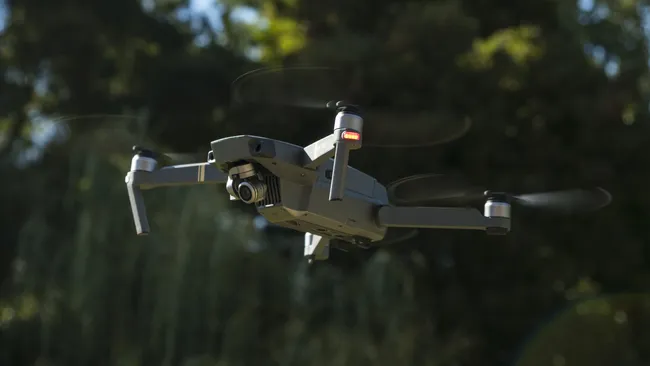DJI, the world’s leading drone manufacturer, recently announced a significant change to its geofencing system. Previously, DJI drones were programmed to automatically avoid sensitive areas like airports, prisons, and national landmarks, thanks to GEO-coded restrictions. However, as of January 13, 2025, DJI has shifted from “Restricted Zones” to “Enhanced Warning Zones” in the U.S., mirroring a similar change implemented earlier in the European Union. This means drones will no longer be automatically grounded in restricted airspace but will instead issue a warning, leaving responsibility in the hands of operators.

The Reasoning Behind DJI’s Decision
DJI stated that the change aligns with the principle of placing control and accountability on drone operators, reflecting the maturing regulatory frameworks in many regions. Over the last decade, rules governing drone operations have evolved significantly. For example, the FAA once required registration for nearly all drones between 250 grams and 55 pounds. While that rule was later eased for smaller drones, registration served as an educational tool, teaching operators the basics of drone safety, such as staying below 400 feet and avoiding restricted airspace.
DJI argues that advancements in drone regulations reduce the need for automated restrictions. However, critics believe this move could lead to a rise in unsafe or irresponsible drone flights, especially among inexperienced operators.
>>>BTY800 Replacement Battery for Newland NLS-PT850 NLS-PT853
Potential Risks of Removing Automatic Restrictions
With no-fly zones now turned into mere warnings, the risk of drones entering prohibited areas increases. Instances of drones interfering with critical operations, such as firefighting aircraft in Los Angeles, have highlighted the dangers posed by drones in the wrong hands. Similarly, drones have been reported flying dangerously close to commercial flight paths, creating significant safety concerns.
While professional drone pilots often secure proper clearance to fly in sensitive areas, hobbyists may unintentionally create hazardous situations. DJI’s technology previously acted as a safeguard to prevent such incidents. Now, the responsibility lies entirely with operators, raising questions about whether all users will adhere to safety guidelines.
Broader Implications for DJI in the U.S. Market
DJI’s decision comes at a delicate time for the company in the U.S. market. The Chinese-owned company has faced scrutiny and the threat of potential bans due to national security concerns, with lawmakers alleging its technology could be used for espionage. Although DJI has denied these allegations and avoided direct bans, this change could further strain its relationship with U.S. regulators.
Critics suggest that removing geofencing may be perceived as a passive-aggressive response to ongoing U.S. scrutiny. By relinquishing its role as a technological safety net, DJI might be indirectly highlighting the challenges of ensuring drone safety without its restrictions. However, this decision could backfire, as it might lead to increased calls for stricter regulation or even bans on DJI products.
>>>ER6C Replacement Battery for Maxell ER6 ER6B ER6C OTC Robot PLC with SM Plug
The Future of Drone Safety
While DJI drones are celebrated for their innovation and reliability, their appeal extends to a wide range of users, including those new to drone operations. The shift away from automatic no-fly zones raises concerns about how novice users will navigate airspace responsibly without the previous safeguards. Critics argue that this decision risks turning the skies into a “Wild West,” where drones may intrude on sensitive areas, from national landmarks to restricted government facilities.
In response, some experts suggest that drone manufacturers and regulators must collaborate to balance innovation with safety. Stricter licensing requirements or mandatory training programs for drone operators could help mitigate risks while allowing the industry to grow responsibly.
DJI’s decision to relinquish geofencing control reflects broader debates about personal accountability versus technological safeguards in an era of rapidly advancing drone capabilities. While the company emphasizes operator responsibility, the potential for misuse remains a pressing concern. Whether this move will ultimately bolster DJI’s position or result in increased scrutiny and regulation is yet to be seen.